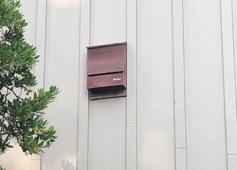By John Miles, Integrated Pest Management Coordinator
Good day, everyone! While COVID-19 has affected everyone’s life in some way, some things are still moving forward. The good and exciting news is that the Integrated Pest Management (IPM) program at RCC is working to make the campuses safer for students and employees, as well as more environmentally friendly.
Since there is much confusion on what IPM is, it might be easier to say what it is not. It is not just a technique, nor is it a ban on pesticides. It is a whole new way of doing things — well, not so new, since it’s been around since the 1970s. Think of it as a toolbox full of tools, some old and familiar, others new and improved.
In the 1950s and early 1960s, there was an attitude of “better living through chemistry.” People would think more is better, and spray their backyards with pesticides that were mixed way too strong and used way too frequently. The results were devastating to some environments. Bird eggshells were softened to the point that they broke, almost leading to the extinction of the California condor. Large plumes of contamination are still detectable on the ocean bottom at the mouths of rivers that go through agricultural and urban lands. Fortunately, nature is self-healing if the problems are caught in time. California condors are making a comeback, and the pesticides are slowly being broken down by bacteria into non-toxic substances.
IPM works with the biology, environment and habits of a pest to reduce their impact to an acceptable level. The first step is education and communication, making sure staff and students know how they can reduce pests on campus. This can be as simple as putting trash in a garbage can. It also involves weighing the impact of a pest against the impact of the cure.
Next comes cultural and sanitation modifications. Pests are only looking for the same things that we are — food, water and shelter. We build buildings for shelter, drop crumbs on the floor for food, and leave a dripping faucet for water. In short, we are our own worst enemies when it comes to pests. We create an ideal environment for them and then complain when they show up. We need to reduce the attraction to our buildings by cleaning up clutter, storing food in pest-proof containers, and keeping our workspace free of attractants.
The third step is physical and mechanical control. This would be keeping doors to buildings shut so rodents or insects don’t get inside. Other examples would be mulching garden beds to prevent weeds or sealing holes around pipes so rodents and insects don’t get into the structure, as well as setting mechanical traps.
The final step, if none of that works, is the application of pesticides. The State of Oregon requires the use of “Low Impact Pesticides,” which are in the lowest category of toxicity.
As we follow these steps and get everyone on campus helping, we will reduce the number of pests we have affecting our campus, as well as our use of pesticides. If you have any questions about IPM, please contact John Miles.
How does IPM work in the real world?

Recently, we have discovered bats in a building at Redwood that is used for storage. Since bat guano can carry diseases, they cannot be allowed to stay. However, has anyone noticed how few mosquitos are on campus? That is because bats eat mosquitos. A lot of mosquitos—up to 1,000 per hour!
If we eliminate the bats, we will be exchanging one problem for another. The solution is to know the pests and work with biology to solve both problems.
We have installed bat boxes in several locations around campus, so when we remove the bats from the building, they will stay on campus and keep it mosquito-free. Next, we will have a contractor install netting over the area where they get in our building and include one-way doors so they can leave but won’t be able to get back in. We have timed this so all the pups are flying and won’t be trapped inside the netting. Hopefully, by knowing our pests and their habits, we will have found a non-toxic, environmentally friendly way to solve our problem without creating another one.

